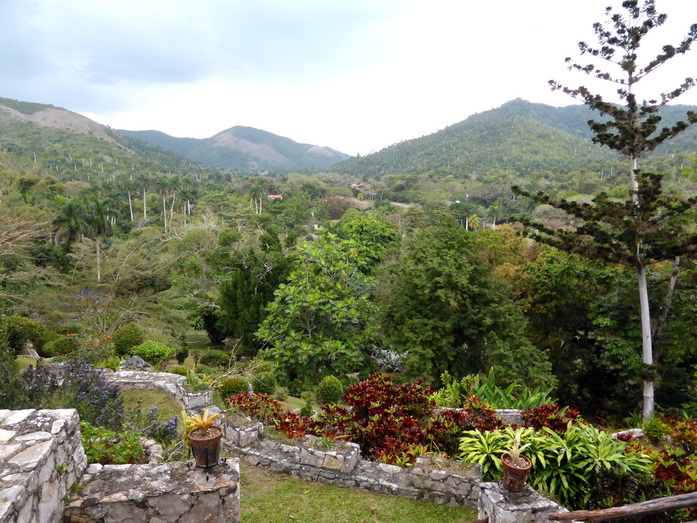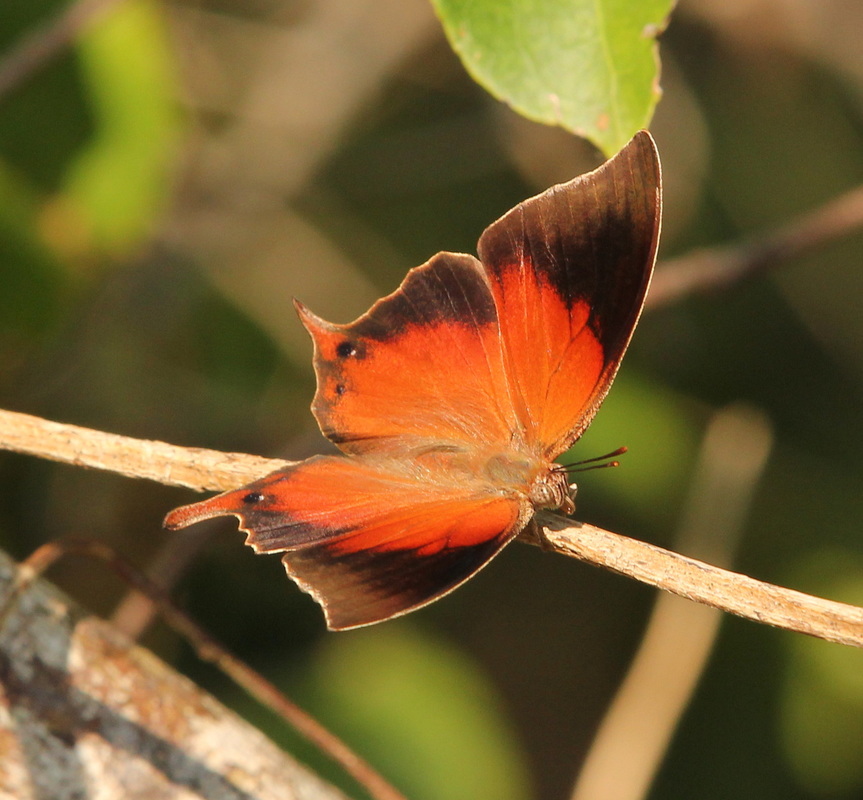 Soroa Orchidarium Feb 2014 © Tim Norriss
Soroa Orchidarium Feb 2014 © Tim Norriss Tim Norriss and Lynn Fomison tell the tale…
We went on our first tour of western/central Cuba in February/March 2014 arranged by Geodyssey. The focus was on birds and although butterflies were frequently seen at the places we were taken to see birds, the guides had little knowledge and sadly little interest in them or the plants they needed. There were some notable exceptions to this - Yoanis at Soroa, and Jer Luis Vera at Topes de Collantes did have useful local knowledge and a true passion for the wildlife there. The lack of information and interest was not surprising given both the difficulty of obtaining books in Cuba and the poor internet access.
We had one book with us, the Field Guide to the Butterflies of the West Indies (pub Dec 1975) by Norman D. Riley which was quite helpful. But it was with the purchase of a second and more detailed book, the Field Guide of Cuban - West Indies Butterflies (pub 2004) by Luis Roberto Hernandez, and with significant help from a friend with excellent knowledge of Cuba and its butterflies (thank you, Peter) that it was possible to identify a number of species seen from photos taken during the holiday meaning we saw 49 of the 180 resident species. Internet searches helped a bit but that alerted us to the fact that there was no dedicated website on Cuban butterflies.
We had two more holidays to Cuba in December 2014 and March 2015, both with Thomas Cook to the Sol Rio Luna y Mares hotel near Guardalavaca on the north coast at the eastern end of the island. We do recommend this as a good hotel for those who want both excellent amenities and yet surrounded by wonderful habitats for wildlife. Our trip in December yielded sightings of 52 species, 23 of these being ones we had not seen before. During the visit in March 2015 we saw 52 species near the hotel at Guardalavaca and a further 24 species on a four-day trip to the Sierra Maestra (Turquino National Park) in the south-east – more on the detail of what we saw on these trips on later blogs!. We have now seen 96 of the 180 resident species. The aim has been to take good quality photographs for the website, observe butterfly behaviour, find and photograph eggs and caterpillars and study the habitat. As our identification skills improve we find we can identify more and more species at a glance. It will be useful to show photographs of species for which there are currently no pictures of live specimens on the internet and some of the pictures on this site already do just that. There are also many species for which even the basic ecology like larval foodplants are as yet unknown so it will be good to see if we can add to the knowledge in some small way.
Our research on the Internet has enabled us to establish a link with leading Cuban lepidopterist Rayner Núñez Águila and we are very grateful to him for his assistance in answering our queries. Some of his research work is detailed on the links page on this web site.
We hope that these pages will help keen lepidopterists like us to see and record Cuban butterflies at a time when the country is potentially facing a time of great change. We have also forged links with guides working in National Parks and in local tour companies, all with the objective of helping people, both holiday-makers and those living in Cuba, to enjoy and cherish Cuban butterflies.

 RSS Feed
RSS Feed